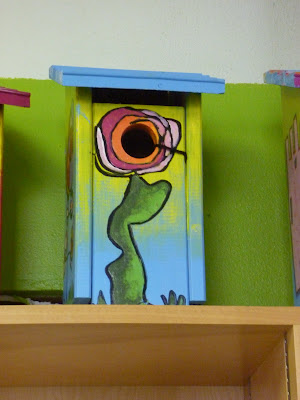Yesterday I participated in the 2009 Walk the Walk for mental health awareness and support, sponsored by
NAMI Athens and
The Gathering Place. It was exhausting, to say the least. There were two routes, long and short, both leading to
Appalachian Behavioral Healthcare, the local psychiatric hospital. I took the long one, of course. See below for my route.
View Walk the Walk route in a larger map
The walk began as a rally in front of the Athens courthouse at 10:00 a.m., where speakers such as Rep.
Debbie Phillips, State Senator
Jimmy Stewart, and Mayor
Paul Wiehl talked about the plight of mental health reform in Ohio. Phillips mentioned that while we're facing a budget shortfall, people are fighting for mental health issues in the House.
What was of particular interest, though, was something Stewart brought up. In the time since March, he said, funds for alcohol and drug abuse as well as mental health items have been cut more than anything else. We used to be one of the best states in this area, according to NAMI. As a result, Stewart said, many mentally ill are ending up in prison because the system doesn't have the resources to assist them.
In the past Stewart helped push a bill through the Ohio House and Senate that would enable behavioral health boards to allocate more funds to non-
Medicaid programs. Unfortunately,
Governor Strickland vetoed this bill.
After the speakers spoke, a band made up mostly of music therapy students played as participants assembled on the courthouse steps to pose for a group picture before embarking on the road ahead. The first stop: The Gathering Place. Walkers went through the building, collecting snacks and pamphlets along the way and brandishing signs about mental health awareness.
The long walk encompassed the Ridges and its surrounding nature walk through some woods. Parts of it reminded me of
Y tu mama tambien, a movie in which the characters pass roadside graves while driving to some unknown destination--a tinge of the tragic underlying every experience, even the most life-affirming ones. We passed two graveyards and a memorial bench that struck me particularly--a man who was born in 1980 and died this year, who loved chess. "So long, and thanks for all the fish," the memorial read, quoting Douglas Adams' opus
The Hitchhiker's Guide to the Galaxy.
I interviewed the acquaintances I made over the course of the walk. One of them, named Lauren Holz, volunteers at The Gathering Place for her Economics of Poverty class. She said she has the most fun playing Euchre with the clients. Holz' little sister has
Obsessive-Compulsive Disorder, so she has firsthand experience with mental health issues. She said the OCD's been most severe when Holz is at college, as her sister couldn't control her being there.
Another person with whom I walked was Tim England, whose sister has
Attention Deficit Disorder. He said his mom doesn't want to put her on meds because they make her "real down."
Tim Roessler was an interesting fellow. He spoke before the walk, and has been going to The Gathering Place for "six or seven years now," ever since his accident, in which a wall full of freight fell on him, causing one leg to be shorter than the other, among other problems. He became homeless, which brought on a deep depression. TGP helped him, he said: "If you don't have anyplace to go, you get depressed, but if you can mingle, you don't focus on it as much."
Roessler used to be a "world-class athlete"; he said he should have gone pro in baseball and possible football. Instead, he joined the service to fight in Vietnam, and by the time he got back, he was too badly injured to play.
Scott Kreps, the director of TGP, said the Walk was "the best one yet," with about 450 people attending. "It was a great way to start a conversation about mental health and the need for services," he said. When asked about the funds raised, he said "not a huge amount was raise, maybe a couple thousand," and that it was more about awareness about issues and a community event.
"Anytime this many people in the community come together, it shows we do have some human capital here. We have a long way to go, though," he said.
See below for some pictures from the event.





















